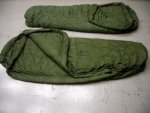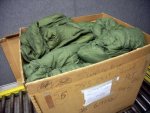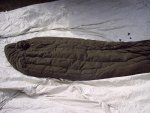B4 is a rarely used code. It might have been used by a conscientious troop who actually used the correct code, but as stated several times here, it usually means nothing, especially after sitting for a while.
B4 means serviceable and usuable without extensive maintenance. Used by one who may not be totally objective. It could be a refurbished machine that would warrant such a coding upon turnin.
Don't rely on any codes, none-the-less. The coding system is often abused. Some units, for instance, cannot turn certain items in unless "F", "G", or "H" coded, meaning they are condemned and unusable. "F" usually means it can be repaired, but this is one I would be most reluctant to believe in. It might be running, but then, it might not either, and may not be economically feasible to repair, thus the turn-in.
Your best bet is a good and full screening prior to a bid. If not possible due to long distance, solicit a fellow SSer to take a look for you. Most will do it to help out for a nominal fee to cover fuel and donuts for the locals. Due to fluid checks and starting issues, as well as testing brakes if possible, expect a little more for their time on vehicles then any other.
$35-75 might cover it. Some, going in the local area anyway for their own personal screening, might do it for free.
Codes as follows:
FEDERAL CONDITION CODES
This is a two-character combination of the
“Supply” code and the “Disposal” code. The
Hand Receipt Holder (HRH) turning the excess items to the Property Disposal Office
assigns the Supply code; it is always the first position of the Federal condition code. The
Property Disposal Officer (PDO) assigns the Disposal code after inspection of the item,
which provides additional information for screening purposes.
Supply Code:
A – Serviceable
- Issuable without Qualifications
New, used, repaired, reconditioned material that is serviceable and usable to all customers
without limitation or restrictions.
B – Serviceable
– Issuable with Qualifications
New, used repaired, or reconditioned material which is serviceable and usable for its intended
purpose but which is restricted from issue to specific units, activities, or geographical areas by
reason of its limited usefulness or short service life expectancy.
C – Serviceable
–Priority Issue
Items which are serviceable and issuable to selected customers, but which must be issued before
Condition A and B material to avoid loss as a usable asset.
D – Serviceable
– Test/Modification
Serviceable material that requires test, alteration, modification, conversion or disassembly. This
does not include items that must be inspected or tested immediately prior to issue.
E – Unserviceable
– Limited Restoration
Items that involves only limited expense or effort to restore to serviceable condition and which is
accomplished in the Property Disposal Warehouse where the items are located.
F – Unserviceable
– Reparable
Economically reparable items which requires repair, overhaul, or reconditioning.
G – Unserviceable
– Incomplete
Items requiring additional parts or components to complete the end items prior to issue
H – Unserviceable
– Condemned
Items that have been determined to be unserviceable and do not meet repair criteria .
S – Unserviceable - Scrap
Disposal Code:
1 – Excellent
Property that is in new condition or unused condition and can be used immediately without
modifications or repairs.
4 – Usable
Property that shows some wear, but can be used without significant repair
7 – Reparable
Property that is unusable in its current condition, but can be economically repaired
.
X – Salvage
Property that has some value in excess of its basic material content, but repair or rehabilitation is
impractical and/or uneconomical
S – Scrap
Property that has no value except for basic material content.
Acceptable Federal Condition Codes (Combinations of the
Supply and Disposal
Condition Codes) are as follows:
A1, A4
B1, B4
C1, C4
D1, D4, D7
E7
F7, FX
G7. GX
H7, HX
SS






